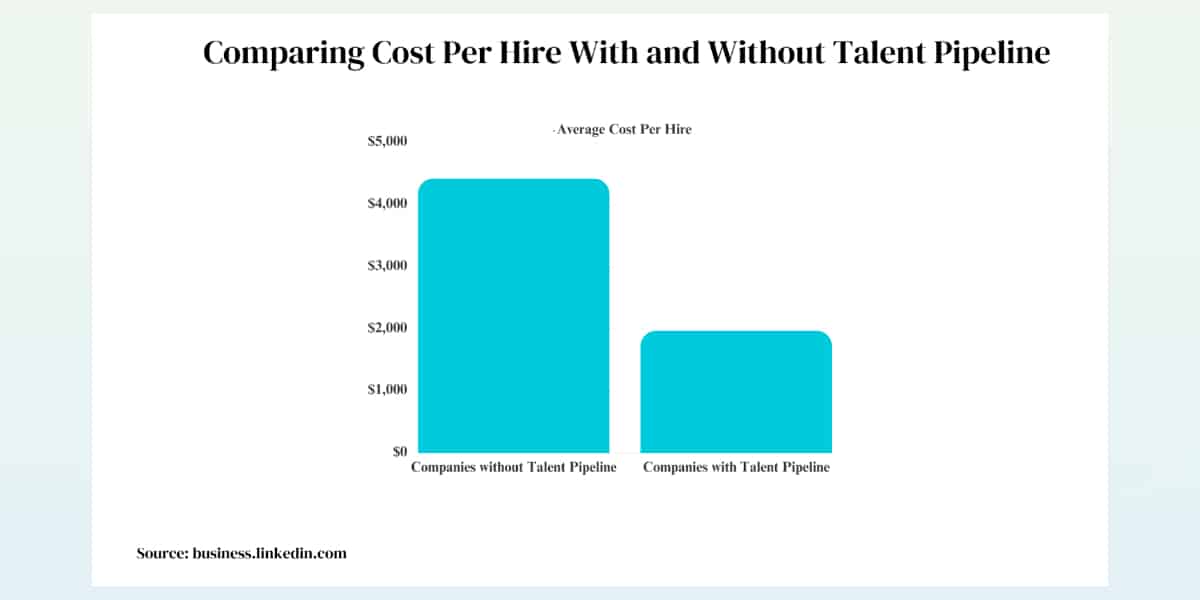Having a solid pipeline of candidates is so important these days. It lets companies fill key jobs fast with great people. Rather than scrambling at the last minute to hire, companies can tap into promising talent already in their pipeline.
In this post, we will explore proven ways to find great candidates. We will discuss how to connect with them. And how to turn top talent into new hires later on.
Smart recruiting means planning for what hiring you’ll need. Don’t just react at the last minute. Let’s talk about how to build a strong talent pipeline.
Clarifying Future Hiring Needs
First, get very clear on what types of roles you’ll need to fill down the road. Look at things like:
- Your company’s growth plans and new projects coming up.
- How many employees might retire or leave soon?
- If you’re expanding into new markets you need different skills.
- Gaps found in succession planning.
Make a list of the top priority jobs, number of openings, experience required, and must-have skills. This will tell you what kinds of talent to start sourcing and engaging for your pipeline.
Researching Prospects Proactively
Once you know the key roles you’ll need to fill, begin sourcing potential candidates proactively with the assistance of smart recruitment services. Start this even if you don’t have current openings. Take a multi-channel approach:
- Network Referrals – Ask colleagues, managers, and executives for recommendations.
- Employee Referrals – Engage staff to suggest people within their networks. Offer referral bonuses.
- Conference and Events – Attend industry events to connect with talent. Collect contact info for follow-up.
- Social Media – Search platforms like LinkedIn for profiles using relevant keywords.
- Academic Sourcing – Develop on-campus relationships for new graduate talent.
- External Recruiters – Retain agencies to help build your pipeline.
- Competitor Watching – Monitor competitor sites and news for top talent moves.
The ideal pipeline candidates are passive prospects. They aren’t actively job searching. Engaging this talent requires a proactive approach.
Establishing Connections With Prospects
Once identified, your next task is engaging prospects by establishing direct connections. Outreach tactics include:
- Introductions from Mutual Connections: The most effective way to engage passive candidates.
- Cold Outreach: If no shared connection exists, send an invite through LinkedIn or email. Personalize each message after researching the prospect’s background.
- Scheduling Exploratory Calls: Don’t pitch immediately. Start with a short call to establish rapport.
- Meeting at Conferences/Events: Set up facetime at industry conferences or local meetups.
- Inviting to Company Events: Offer exclusive invitations to webinars, open houses, and VIP events.
- Adding to Your Community: Include prospects in relevant email lists, groups, and communities.
The goal is to start an organic relationship focused on their interests and goals. Avoid an immediate sales pitch.
Cultivating Ongoing Engagement
To keep promising candidates warm and move them through your pipeline. You’ve gotta nurture them consistently over time. Here are some great ways to stay engaged:
- Send them personalized content like articles, case studies, and research. Make sure this content is relevant to their role.
- Invite them to special webinars, events, and seminars just for VIPs. Offer exclusive content and networking.
- Reach out on holidays and birthdays to maintain your brand connection.
- Involve them in surveys and expert interviews. This makes them feel valued.
- Share alerts about any openings that fit their experience.
- Mail high-value collateral and swag periodically.
- Interact on social media by liking, commenting, and sharing their posts.
- Recognize work milestones and achievements.
The goal is to sustain a positive brand impression and stay top of mind. But without pressuring them to apply just yet.
Converting Prospects Into Applicants
Once you have an opening matching a prospect’s background, it’s time to motivate them to apply. Strategies for inspiring prospects include:
- Educate on Company and Role: Share compelling overviews of your company, culture, and specific role details.
- Communicate the Vision: Convey the greater purpose, values, and community impact of your work.
- Leverage Connections: Ask mutual connections to personally endorse your organization.
- Highlight Growth Potential: Emphasize advancement pathways and career development support.
- Sell Lifestyle Perks: These are benefits like remote work options, facilities, travel, and other lifestyle perks.
- Outline Incentives: Promote competitive pay, engaging culture, growth opportunities, and other differentiators.
- Urgency and Exclusivity: For highly sought-after prospects, note application deadlines or that positions are limited.
The prospect should have a clear picture of why your company and opportunity stand out before applying.
Evaluating Prospects
Once prospects enter your application process, check them against your criteria. Do this before moving to interviews. Assessment techniques include:
- Skills Testing – Use skills assessments to confirm proficiencies required for roles.
- Culture Interviews – Screen for culture fit through preliminary video interviews.
- Case studies – Assign case studies to day-to-day work to gauge capabilities.
- Project Auditions – Provide sample work like real projects. Evaluate performance.
- Reference Checks – Speak to provide references to confirm past achievements and strengths.
- Background Checks – Verify education, employment history, and other background info.
While prospects may look perfect on paper, objective assessments ensure they have the abilities and fit needed to excel.
Benefits of Building a Talent Pipeline
Taking a strategic approach to creating a robust pipeline of prospective hires provides many advantages. This includes:
- Faster Hiring: With talent identified in advance, open roles can be filled more rapidly.
- Lower Cost Per Hire: Less time and expenses are incurred searching for qualified candidates.
- Higher Offer Acceptance Rates: Prospects already engaged with your company are more likely to accept offers.
- Improved Candidate Quality: More time vetting results in better hires meeting your needs.
- Reduced Attrition: Stronger cultural matches stay longer.
- Competitive Advantage: A pipeline gives you preferred access to in-demand, passive candidates.
- Proactive Planning: You get ahead of hiring needs instead of reacting to them.
Investing in an ongoing pipeline reduces scramble recruiting when openings arise. Passive prospects are far superior to active applicants from job boards.

Key Talent Pipeline Tools and Technology
Technology and tools can help companies build strong talent pipelines. Applicant tracking systems (ATS) are very useful. ATS stores candidate resumes and profiles in one place. Hiring managers can search the ATS to find people to contact about job openings.
Customer relationship management (CRM) software also helps. CRM tracks interactions with candidates over time. It reminds recruiters when to follow up with candidates. This keeps candidates engaged.
Some CRM systems have AI features. These features automatically score candidates. The scores help identify the most promising people. Recruiters make sure to focus extra attention on these candidates.
Another important tool is talent networks. Talent networks are big candidate databases. Job seekers join them to get notified of openings. Companies use talent networks to find qualified candidates faster.
Email marketing and automation tools are useful too. These tools send automatic emails to candidates. The emails give updates and share content. This maintains relationships without a lot of manual work.
With the right tools and technology, recruiters can build strong talent pipelines. They can find and engage top talent more efficiently.
Frequently Asked Questions
What metrics indicate a healthy talent pipeline?
Track prospect source breakdown, contacts added weekly, and nurture touchpoints delivered. Also, track prospects converted to applicants over time. Pipeline velocity is also a useful metric.
When is the best time to approach passive prospects?
The optimal windows are when people are more open to new opportunities. Examples are Q1 after bonuses are paid out or in September when people reassess plans.
What is the #1 mistake companies make with talent pipelines?
Not maintaining ongoing nurturing of prospects. Relationships decay quickly without regular touches. Even when not hiring, continue cultivating your community.
Putting It All Together
Building an effective talent pipeline requires extensive planning, outreach, candidate management, and tools. But the superior access to qualified, interested prospects is a recruiting game-changer.
Follow the strategies in this post, and you will hire the very best talent before competitors even know they exist.






